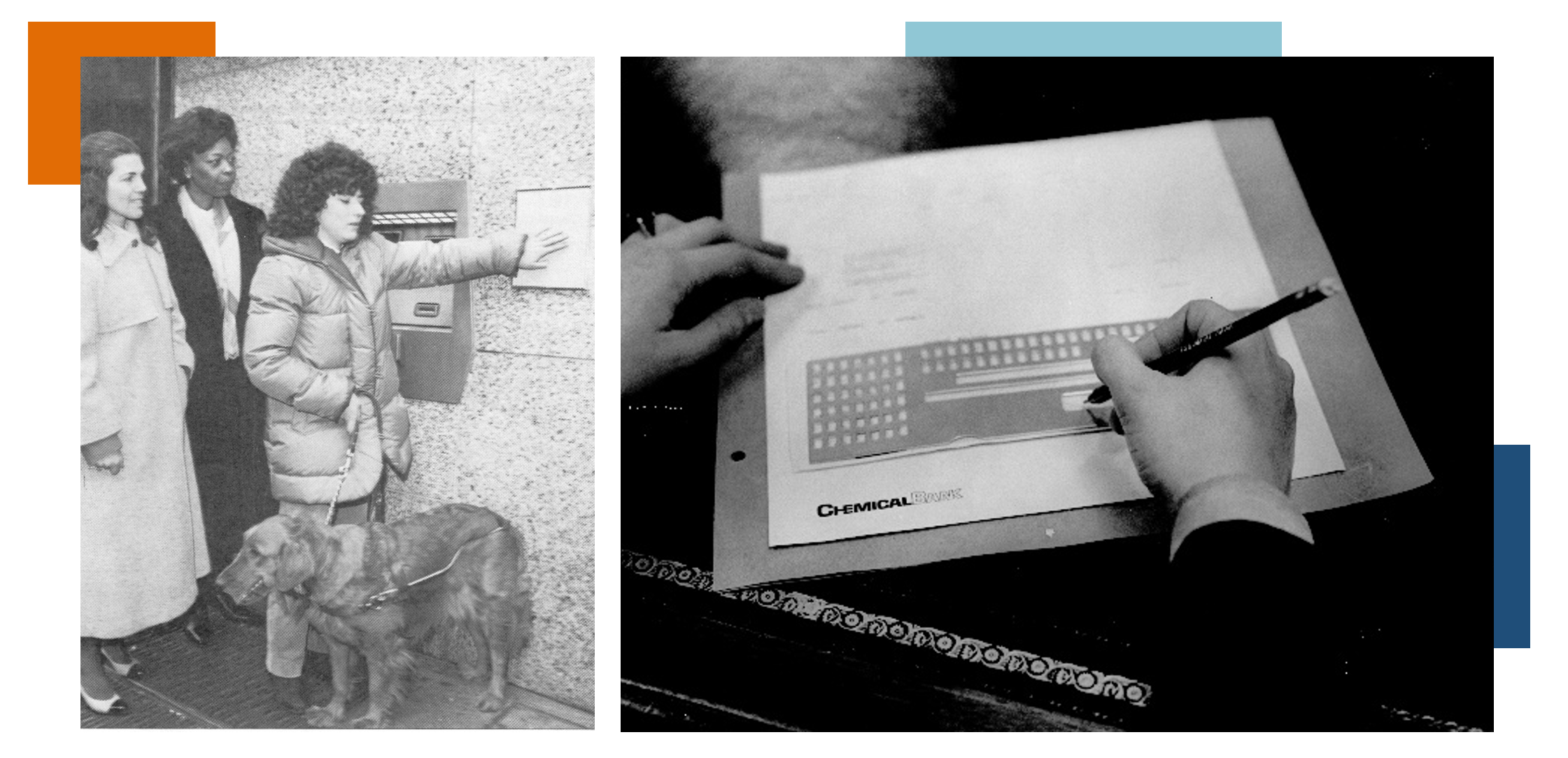January is Braille Literacy Month in honor of Louis Braille’s birthday on January 4, 1809. The creation of the braille system transformed the lives of the blind and low vision community. It is no surprise that banks were eager to incorporate the system into their products and services to better serve this community.
In 1963, a customer entered JPMorgan Chase predecessor Chemical Bank’s 60th Street and Lexington Avenue branch in New York City to ask if there was a way for a person who is blind to independently fill out a check. At the time, assistance was necessary to complete banking transactions. Roberta Berkel, who would later become Chemical’s first female branch manager, worked with her colleague Norman Henderson to create an innovation that would change the course of banking for customers who are blind or have low vision.
Henderson developed the Braille Checkwriter in 1965. The device utilized a pair of hinged plates outfitted with cutouts which corresponded to the blank lines on a check. Customers placed a check between the two plates and used the braille next to the cutouts to write out their check. The Braille Checkwriter was met with great excitement among the blind and low vision community as it allowed for total independence when writing a check. In 1968, Henderson applied for a patent for his Braille Checkwriter. The new device was soon made available to banks around the country, and provided greater accessibility than ever before. Chemical Bank distributed these checkwriters for free to any blind customer who opened an account with the bank.
At the same time, the bank also instituted monthly statements in braille. This in combination with the checkwriter led to the formation of a Braille Checking Account System, which was made available for free at all Chemical branches. In 1966, the New York Association for the Blind awarded Chemical Bank’s chairman, William S. Renchard, with the “Lighthouse Humanitarian Award for Distinguished Service to Blind Persons.” The award highlighted Chemical’s ingenuity in making banking accessible for people who are blind.
Chemical Bank, however, did not stop there. In January 1986, Chemical unveiled the first braille ATM in New York City at the 60th Street and Lexington Avenue branch. Like the checkwriter, the new ATM provided blind and low vision customers with independence while using the machine. The integration of the braille system into the ATM was first developed by Margarine G. Beaman, project chairman of the Junior Women’s Federation in Austin, Texas. By November 1986, 69 Chemical ATMs had been outfitted with the braille system.



